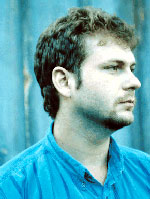Reuters is carrying a story about the preservation of the 1507 Martin Waldseemüller World map, the first known to refer to the New World as America.

Some of the individuals cited in the article express their puzzlement at how Waldseemüller was able to portray as much detail and accuracy as he did, given the extremely limited amound of knowledge that is generally believed to have been extant regarding the New World at this time - for example, Vasco Núñez De Balboa had not crossed the Isthmus of Panama to reach the Pacific until 1513, and likewise, Magellan had not rounded the southern tip of South America until 1520, yet these are shown.
Interestingly, many features in this map are reversed in subsequent maps by Waldseemüller.
The map is cited in the article as a 'keystone map', showing a fundamental shift in how Europe viewed the New World. It also raises many questions about how much we really understand geographic awareness and the availability of cartographic information in ancient times.
My own notion is that we sometimes do not give our predecessors enough credit for their knowledge of the world around them.




Go to solution
Go to solution
Go to solution
Go to solution
Go to solution
Go to solution
Go to solution
Go to solution
Go to solution